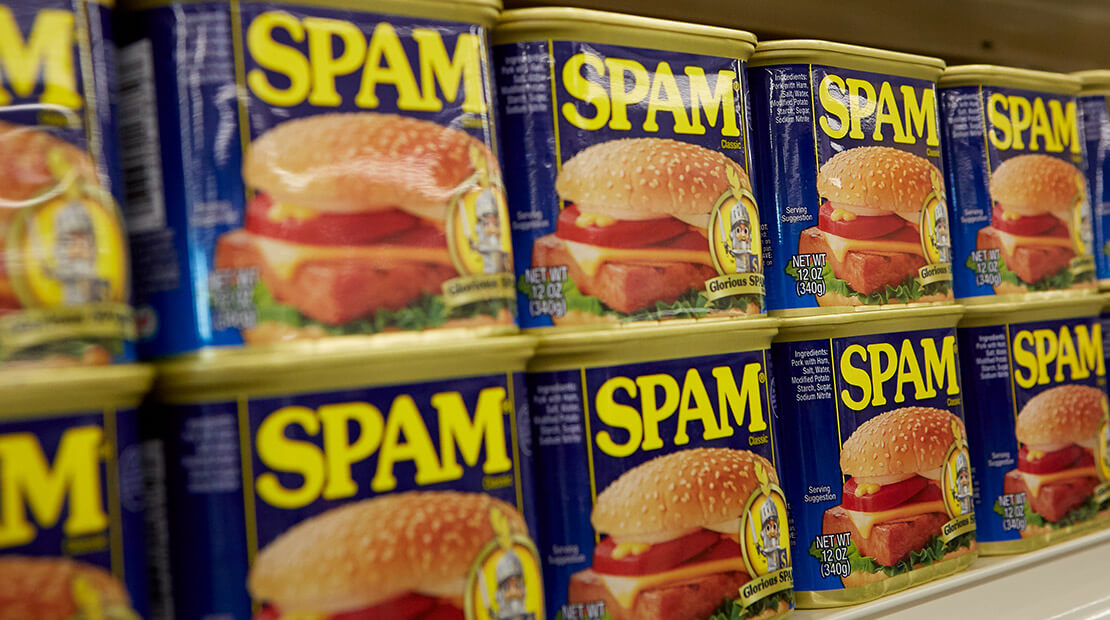Brands
Sales of the ‘Everlasting,’ Beloved Product SPAM have Skyrocketed During Coronavirus as Long-Time Fans Stock Up

Business Insider
In fact, Minnesota-based Hormel Foods’ CEO Jim Snee reported in early April that the significant uptick due to the crisis has 2020 on track to go down in history as the sixth consecutive year of record-setting Spam sales. And when the company reported second-quarter earnings on Thursday, it announced profit was up 22% in its shelf-stable grocery products like Skippy peanut butter, Hormel Chili, and, of course, Spam.
Beyond the easy-to-digest under-$5 price point and long shelf life, Brian Lillis, senior brand manager of Spam, said that the product resonates with a large number of consumers who grew up with it, and “its versatility makes it an easy tradition to pass down from generation to generation.”
Spam spans the generations
Ben Lau is one of those people keeping his family’s Spam legacy alive and cooking. Lau, a fifth-generation Asian-American raised in Brooklyn, NY, grew up in a household that enjoyed this pantry staple in a variety of different ways, ranging from sliced to diced to stripped to cubed, and used it in everything from sandwiches to stews to Kimbap (Korean rice rolls that resemble sushi).
“Our grocery list had milk, bread, and Spam on it. It was always in our pantry,” recalled Lau. As an adult, he was pleasantly surprised when he opened his girlfriend-now-wife’s kitchen pantry and found it stocked with the little blue and yellow iconic tins, only to learn her Korean family ate just as much Spam as his own family did.
Lau and his wife, Karis, along with their two children and his in-laws continue to enjoy eating Spam regularly at home. A self-proclaimed “purist” when it comes to the pink comfort food, Lau only buys the classic and low-sodium varieties of the 15 flavors on the market, which include jalapeno and teriyaki.
“These days, we are eating the same amount of Spam we did before the quarantine, but now we are definitely buying more of it so we don’t run out,” Lau said of his monthly trips to his local Costco in New Jersey, where he buys between 12 and 24 cans per visit. Lau’s fear of running out is most likely unwarranted, though, as Lillis told Business Insider that Hormel is making it a priority to ensure adequate amounts of product remain on store shelves now more than ever.
Recipes grow in demand
Like the Lau’s, recipe developer and “Eating Richly” food blogger Diana Johnson, originally from Hawaii, grew up eating her fair share, consuming a daily breakfast of Spam, eggs, and rice throughout high school.
Before the pandemic struck, Johnson, along with her husband and three children, typically ate Spam once a month. Now, with only three-quarters of their standard income coming in, in part due to a decrease in ad rates and sponsored work, “We’re eating it once a week both from losing income and to avoid a trip to the store when we are low on fresh/ frozen meat,” she said.
In addition to her family’s own personal increased consumption, Johnson has noticed a big spike in web traffic for her Spam-related recipes — which include Spam fried rice and Spam musubi — since the quarantine began, resulting in her publishing her Spam, eggs, and rice recipe, currently ranked No. 1 on Google search results for that keyword.
The history and rise of Spam
While the existence of COVID-19 has increased both interest and consumption of Spam overall, the brand, which first debuted in 1937, has long been a popular one, having sold more than eight billion cans across 44 countries during its nearly 83-year history.
While Guam, referred to as the “Spam capital of the world,” officially holds bragging rights as the leading consumer per capita of Spam, the product is deeply rooted in both American history and pop culture, not to mention the punchline of many a joke.
But Spam, which used to shy away from the mockery, now embraces it in its own fashion. (It actually sponsored the Broadway musical “Spamalot” and even airs a Monty Python video inside The Spam Museum in Austin, Minnesota).
Invented during The Great Depression, 100 million pounds of Spam was sent overseas to feed the US troops during WWII for many of the same reasons we’re seeing a resurgence today — cost, ease, versatility, and lifespan. As a non-perishable, it doesn’t require refrigeration and can be as effortless as cracking open a can, grabbing a fork, and eating it straight from the 12 oz. tin since the contents have already been cooked during production or used as an accompanying ingredient in a recipe.
And while it’s shelf stableness has often been greatly exaggerated and falsely touted as everlasting, Hormel shared this advice on its website:
“While the keeper of an emergency underground bunker might have you believe Spam products offer eternal freshness, there is, in fact, a limit to their goodness. On the bottom of every can of Spam product you’ll find a ‘best by’ date. This is the date Hormel Foods recommends using the product by. You’ll likely find yourself gobbling up the delicious meat inside the can long before that date. But if you find yourself sitting on a stock of Spam products during a zombie invasion, be sure to check the date before you enjoy.”